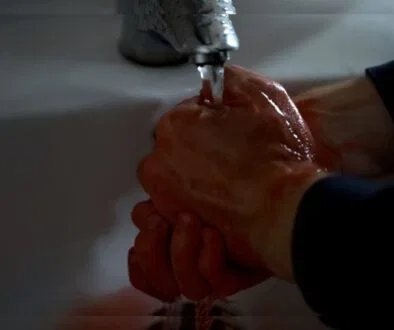What Is 2nd Degree Manslaughter?

Published April 27th, 2021
These past few months, we’ve heard about police officers getting charged for 2nd-degree manslaughter in the wake of controversial police brutality cases. One was Derek Chauvin, the officer who kneeled on George Floyd’s knee. Another is Kim Potter, the officer who claims to have shot a teenage boy by mistake while his hands are up in the air.
But what does a 2nd degree manslaughter charge mean?
The definitions and provisions can vary per state. But, in general, second-degree manslaughter happens when:
- a person kills another without intending to or as a result of recklessness or
- the person continued a reckless act knowing full well that it can result in fatal consequences
Since it involves killing someone, the perpetrator can face jail time, penalty, or both. Depending on the circumstances of the crime, it can last from a year to 30 years.
If you or someone you know is being charged with second-degree manslaughter, here’s what you need to know:
Murder vs. Manslaughter
The main difference between murder and manslaughter is the motive or intent. With murder, the perpetrator has the motive and really intends to get rid of the victim. But with manslaughter, there is no intent involved.
Remember that manslaughter a result of a reckless act. This means that the perpetrator didn’t really want or intend to kill the victim. In some instances, they may want to harm the victim but the intent to kill is not there. The absence of intent means that manslaughter has less moral blame than murder. Thus, it usually has lesser punishment.

ADVERTISEMENT
1st Degree vs. 2nd Degree Manslaughter
In some states, manslaughter is not classified by degree but categorized into voluntary and involuntary. Some of the states that classify manslaughter into degrees are:
In these states, first degree manslaughter, in general, happens when:
- someone intends to hurt another but ends up killing that person
- someone kills another because of extreme emotional disturbance
- a person intentionally kills someone due to verbal or physical provocation
Most states also have specific provisions as to what constitutes 1st degree manslaughter. In Oklahoma, a person who killed another while resisting an attempt by the person killed to commit a crime may also be charged with manslaughter in the first degree.
While second-degree manslaughter generally happens when:
- a person died due to the other’s recklessness.
- the perpetrator intentionally caused or assisted that person to commit suicide
- a person was killed but the circumstances of the crime cannot be considered murder or first degree manslaughter
In some states, abortion may also be considered second-degree manslaughter especially if the mother died during the process.
How Long Do You Go to Jail For It?
Since it’s a felony, second-degree manslaughter can send you to prison for a year or several years. How long you’ll remain in jail depends on:
- the severity of the crime
- the state where it happened
Each state has their own way of punishing manslaughter crimes. In states with second-degree manslaughter charges have the following prescribed jail time:
- Connecticut – 1 to 20 years
- Kentucky – 5 to 10 years
- Minnesota – up to 10 years
- South Dakota – up to 10 years (plus $20,000 in fines)
- Oklahoma – 2 to 4 years
- New York – 1 to 15 years
In states where manslaughter is classified as voluntary or involuntary, jail time can be up to 40 years sometimes with no probability of parole.
Reduce Your Jail Call Costs By Up To 90% Per Minute With GlobalTel
GlobalTel’s inmate calling service lowers jail call per minute rates by up to 90% for jail calls from US facilities. Sign up now and use the special jail call phone number we create for you to eliminate the long distance jail call fees. Try GlobalTel for only $45.99 for 90 days. Make US/domestic and international jail calls at the local rate and stay connected to your incarcerated loved ones for less. Learn more about how to sign up for calls from inmates here.

This Content Is Fact Checked
Our esteemed team of specialists has thoroughly validated the accuracy of this information. Discover further details about the rigorous editorial guidelines for our website here.
ADVERTISEMENT

About The Author
Judy Ponio is a professional writer for the GlobalTel blog. She works hard to ensure her work contains accurate facts by cross checking reputable sources and doesn’t settle for less. Her passion for telling stories about true crime and criminal justice has allowed her to create hundreds of articles that have benefited millions of people.




